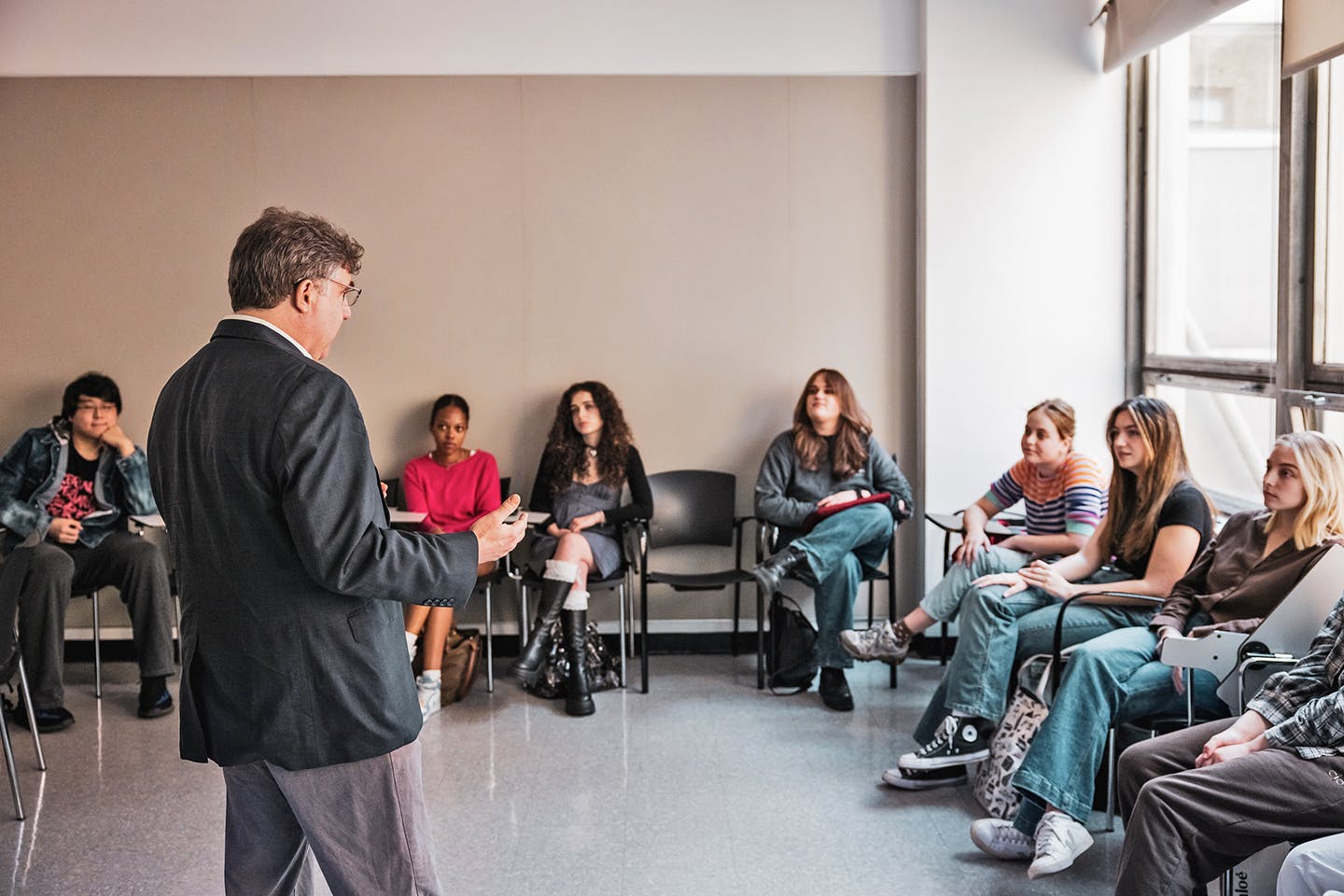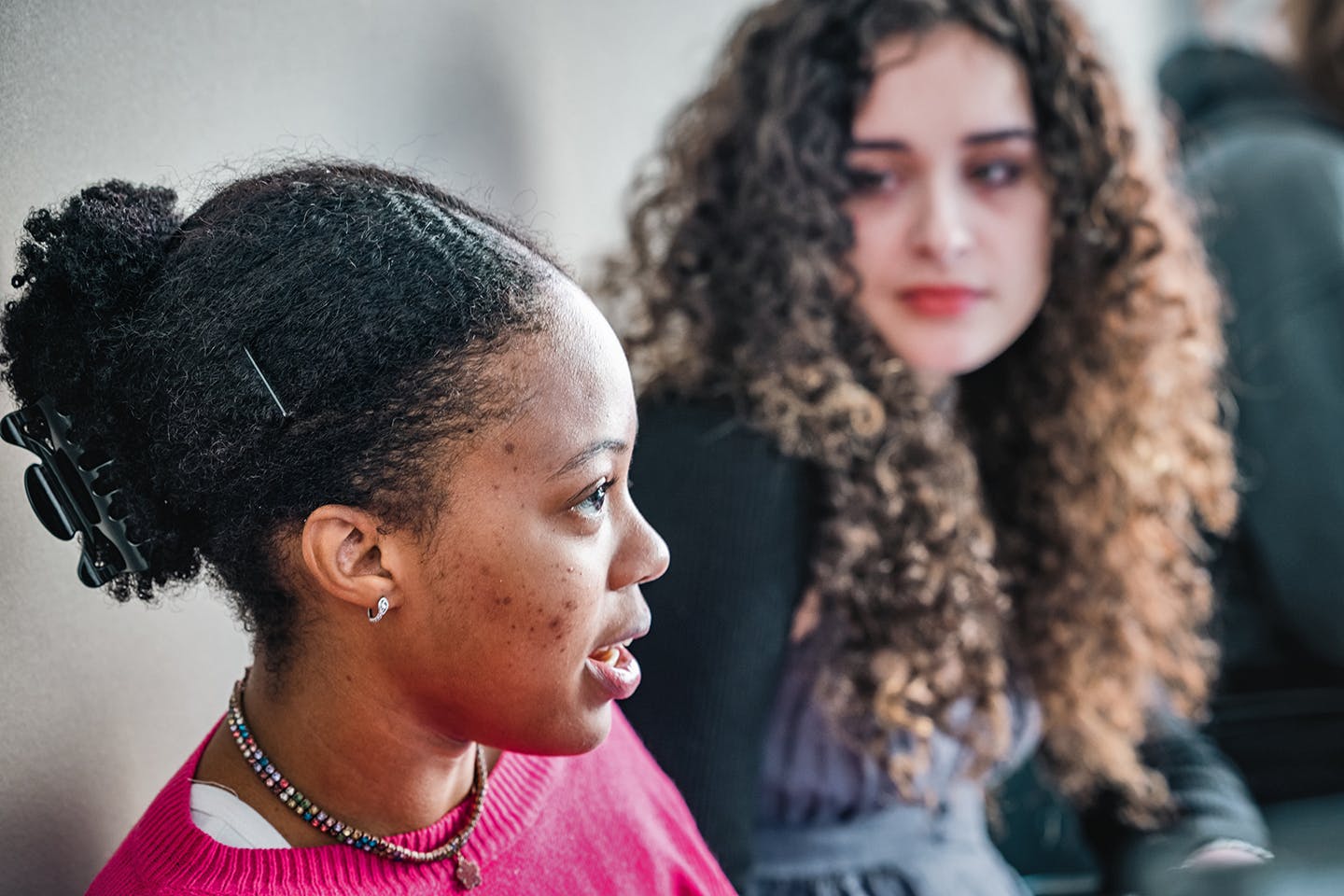Learn to Use the Tools for Change
Eugene Lang College of Liberal Arts
Will artificial intelligence (AI) ever be able to replace human journalists? Blake Eskin and his students explore this question together in his course Journalism and the Machine at Eugene Lang College of Liberal Arts.
Many Journalism + Design students enroll in Eskin’s course in the hope of entering a field that is experiencing tremendous change because of the rise of AI capabilities and the growing
popularity of language models like QuillBot and ChatGPT.
The replacement of journalists with machine-based models such as AI would pose an enormous risk of abuses of power—by those who build, program, and control the machines and by the systems and institutions normally checked by a free press. Aware that journalism
is vital to the well-being of democracy, Eskin and his students are seeking a balance between technological advancement and the prevention of such abuses of power.
“There is going to be a lot of change in journalism,” Eskin says, “but I also think that the more my students get to know about the subject of AI, the more they come to understand what a computer right now can and cannot do.”

Humanity’s fear of the machine is nothing new. The advent of new technologies has always aroused the fear that humans would be replaced by machines.
Eskin likes to start off his course by showing the 1957 film Desk Set, a romantic comedy in which a computer expert tries to prove that his machine can replace the research staff of a TV network. Katharine Hepburn plays the manager of the staff, made
up of women who serve as the brain of the institution and are now threatened with replacement by a machine. At the climax of the film, the shortcomings of the computer become apparent.
In real life, as in the film, computers are inherently limited in their capabilities, as they are designed and operated by humans and reflect their biases. In addition, as machines, they lack the capacity for empathy, dealing strictly with data and images.
As Eskin emphasizes to his students, critical analysis and the freedom to engage in independent thought are fundamental pillars of a democratic society. If journalism is conducted solely by programmable machines subject to government control, who will
be responsible for monitoring and exposing abuses of power? Could Eskin’s students emerge as part of a new generation of discerning and compassionate storytellers, capable of examining their own biases and promoting journalistic integrity and thus
fostering a fresh and inventive approach to journalism?
Eskin reminds his students, “Journalism isn't just writing.” At The New School, students are encouraged to experiment and explore the possibilities offered by technology as a way to drive progress in the world. In journalism, this can lead to new interactions
between researching, reporting, and storytelling and media that are undergoing rapid technological transformation.

Eskin has been at the frontlines of human–machine interaction since the Internet began to reshape journalism. He served as the first Web editor of the New Yorker, a job he was drawn to in part, he says, because of the publication’s interest in exploring
the possibilities of audio journalism as a low-cost medium for in-depth discussion. Eskin has been involved in podcasting since 2005, having gotten his start with a weekly Jewish culture show for the nonprofit Nextbook. He currently runs the media
consultancy Noun & Verb Rodeo, helping people and institutions produce their own podcasts. Several New School alums have worked on Noun & Verb Rodeo projects.
“Part of why I got involved in podcasting is that it was a place that lived outside the Google universe, so it hadn’t been overoptimized for engagement or for monetization,” Eskin explains. “I noticed that people were making stuff that their audiences
wanted and were connecting with.”
Eskin is constantly learning from his students, who, he says, have a “real sophistication” when it comes to analyzing media. As AI advances, journalists and their profession evolve in parallel, adapting to the changing landscape. Eskin’s students, too,
engage in nuanced work that reflects this evolution, demonstrating an ability to navigate and contribute to the field as technology develops.
“There was one student who was interested in how AI was affecting music,” Eskin recalls, “but it hadn’t been a big topic in the class. They brought that to me, and 48 hours later, there were stories on Vox and in the New York Times and Billboard and Pitchfork
about this topic. My students are always a great source of breaking news in areas that I don’t follow as much.”
While eager to delve deeper into the nuances of journalism, Eskin’s students also display a highly critical attitude toward media. “I've learned that my students who are 19 to 21 tend to be much more sophisticated and are much more likely to question
information they hear than their grandparents and maybe even their parents’ generation,” Eskin says.
Their generation, which has been exposed to an overwhelming amount of media all their lives, is the most skeptical he’s ever seen outside the former Soviet Union.
“I studied in Russia in the early 1990s, and the people I met there were very skeptical, in part because there was no reliable information,” Eskin says. “I think that there’s a similarity in this generation. They really do know that the things they hear
are not necessarily true. They don’t always follow up on it, but they know to ask questions about it.”
The more we use AI, the more potency it gains. Equipping students with knowledge and the ability to think critically about the media they use and the technology they consume is of crucial importance in preparing them to adapt to and navigate the dynamic
landscape of journalism.